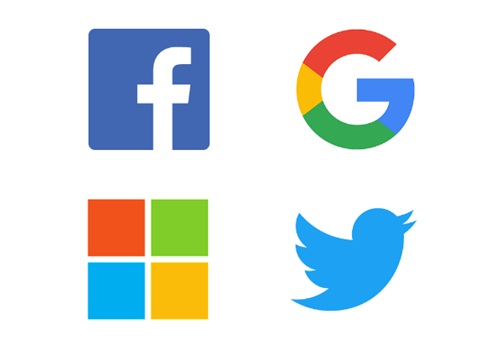Four tech giants — Facebook, Google, Microsoft, and Twitter — on Friday announced they were joining the open source initiative called the Data Transfer Project (DTP) to help billions of users manage their data and help them transfer it that into and out of online services without privacy issues.
In a blog post, Google described the project as letting users “transfer data directly from one service to another, without needing to download and re-upload it”.
The current version of the system supports data transfer for photos, mail, contacts, calendars, and tasks, drawing from publicly available APIs from Google, Microsoft, Twitter, Flickr, Instagram, Remember the Milk, and SmugMug. Many of those transfers could already be accomplished through other means, but participants hope the project will grow into a more robust and flexible alternative to conventional APIs.
In its own blog post, Microsoft called for more companies to sign onto the effort, adding that “portability and interoperability are central to cloud innovation and competition”.
In the early stages at the moment, the Data Transfer Project will help users of one service to use their data to sign up for another service with encryption.
"Using your data from one service when you sign up for another still isn't as easy as it should be. Today we're excited to announce that we're participating in the Data Transfer Project," said Steve Satterfield, privacy and public policy director at Facebook, in a statement.
The initiative comes at a time when data-sharing is making headlines — be it the massive Cambridge Analytica data scandal or third-party apps accessing users' data at various platforms – and countries announcing new data-protection laws like the European General Data Regulation Protection (GDPR).
Moving data between any two services can be complicated because every service is built differently and uses different types of data that may require unique privacy controls and settings.
"For example, you might use an app where you share photos publicly, a social networking app where you share updates with friends, and a fitness app for tracking your workouts," said Satterfield.
"These are the kinds of issues the Data Transfer Project will tackle. The Project is in its early stages, and we hope more organisations and experts will get involved."
The Data Transfer Project uses services' existing APIs and authorisation mechanisms to access data. It then uses service specific adapters to transfer that data into a common format, and then back into the new service's API.
The tech giants also released a white paper on this project.
"The future of portability will need to be more inclusive, flexible, and open. Our hope for this project is that it will enable a connection between any two public-facing product interfaces for importing and exporting data directly," read the white paper.
According to Damien Kieran, data protection officer at Twitter, right now, much of the online products and services we use do not interact with each other in a coherent and intuitive fashion.
"Information that is housed on one platform cannot be easily and securely transferred to other services. This is not a positive collective experience for the people who use our services and we are keen to work through some of the challenges as an industry," Twitter said.
The existing code for the project is available open-source on GitHub, along with the white paper describing its scope. Much of the codebase consists of “adapters” that can translate proprietary APIs into an interoperable transfer, making Instagram data workable for Flickr and vice versa. Between those adapters, engineers have also built a system to encrypt the data in transit, issuing forward-secret keys for each transaction. Notably, that system is focused on one-time transfers rather than the continuous interoperability enabled by many APIs.
The bulk of the coding so far has been done by Google and Microsoft engineers who have long been tinkering with the idea of a more robust data transfer system. According to Greg Fair, product manager for Google Takeout, the idea arose from a frustration with the available options for managing data after it’s downloaded. Without a clear way to import that same data to a different service, tools like Takeout were only solving half the problem.
“When people have data, they want to be able to move it from one product to another, and they can’t,” says Fair. “It’s a problem that we can’t really solve alone.”
The Data Transfer Project was formed in 2017 to create an open-source, service-to-service data portability platform so that all individuals across the web could easily move their data between online service providers whenever they want.























